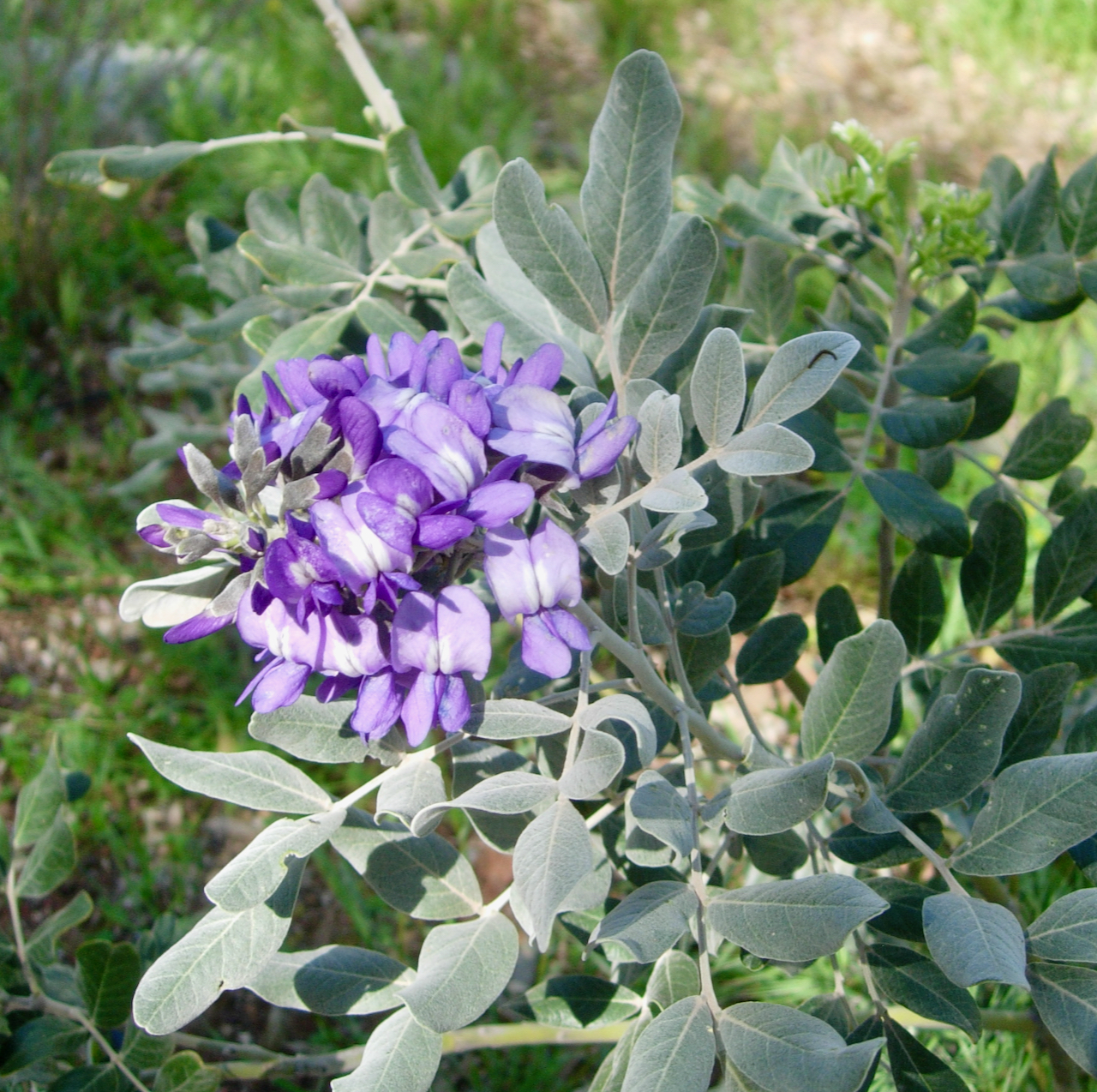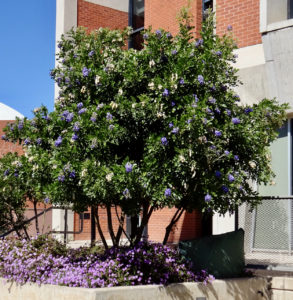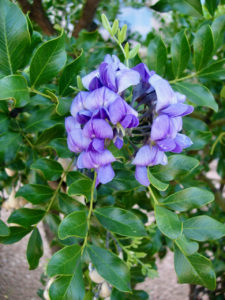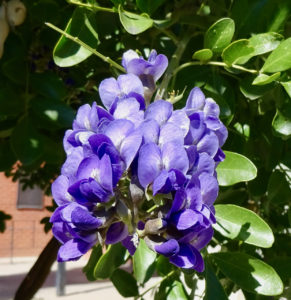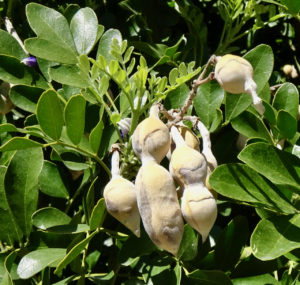Texas Mountain Laurel
Dermatophyllum secundiflorum
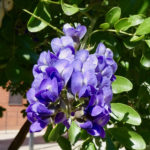
About the Plant
Texas mountain laurel is a small evergreen tree native to the mountain systems of the Chihuahuan Desert, found in New Mexico, Texas, and northern Mexico. Large clusters of showy purple flowers, smelling of grape soda and looking somewhat like wisteria, appear in March. Light-colored seed pods can remain on the plant for 12 months or more.
Texas mountain laurel is a multi-stemmed tree/tall shrub that grows to about 15 feet high, but very slowly, especially the first few years after planting. This tree is difficult to grow and transplant so it is best to buy it in 5 or 15 gallon nursery containers. Grow in full sun and well-drained soil. Very little pruning, if any, is needed, though lower branches can be removed. The plant is very slow to recover if severely pruned. If pruning is necessary, prune after flowering. Pruning in autumn or later can remove the next season's flower buds. Irrigate every 1 or 2 weeks in summer to maintain glossy appearance.
Notes:
- Seeds and foliage of Texas mountain laurel are toxic if eaten and have resulted in livestock losses.
- Previous scientific names for this plant include Calia secundiflora and Sophora secundiflora. You may see this plant still listed as Sophora secundiflora.
- Foliage is sometimes eaten by the caterpillar of pyralid moths, such as that of the Genista broom moth.
- A silvery-leaf variety, often called Silver Peso, is available (photo below). It is said to be less likely to suffer damage from pyralid moth caterpillars.
More Information
Horticultural information from ASU
Information from Texas A&M
Map of distribution in US (bright green means native)
In books:
Native Plants for Southwestern Landscapes by Judy Mielke, page 258 (as Sophora secundiflora)
Trees and Shrubs for the Southwest by Mary Irish, page 293 (as Sophora secundiflora)
